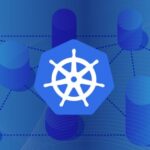ReplicaSet is an object in Kubernetes that manages the creation and scaling of identical pods. It ensures that the specified number of replicas of a pod are always running. This makes sure that the desired state declared in the ReplicaSet spec is fulfilled at all times. ReplicaSets also provide horizontal scaling, meaning that you can have as many or as few pods as you need depending on the load. ReplicaSets also play a role in high availability, as they keep the number of replicas to the expected level across various node failure scenarios. Additionally, ReplicaSets replace old pod versions with newer ones when updates are rolled out, ensuring that your services always stay up to date with the latest versions.
BENEFITS –
Replica Sets are one of the most important features of MongoDB. A Replica Set is a group of MongoDB nodes that replicate data across multiple nodes for redundancy, high availability, scalability, and data recovery.
Replica sets provide a way for applications to continue working even if individual nodes fail. By providing automatic failover and redundancy, replica sets ensure your data is always available and secure.
Here are some of the key benefits of using replica sets with MongoDB:
- High Availability: Replica sets ensure continuous availability of data, even in the event of failure of individual nodes.
- Redundancy: By replicating data across multiple nodes, replica sets provide redundancy that helps protect against data loss.
- Scalability: Replica sets make it easier to scale out your cluster as your data needs grow.
- Security: Replicated data helps protect against malicious attacks and other unwanted events.
- Data Recovery: Replica sets provide automated data recovery in the event of a failure, helping to reduce downtime and data loss.
Overall, replica sets are an invaluable feature of MongoDB that provide immense value and protection for your data. They are essential for ensuring high availability, redundancy, scalability, and security in any MongoDB deployment.



Pingback: What is Deployment in Kubernetes? - MtroView